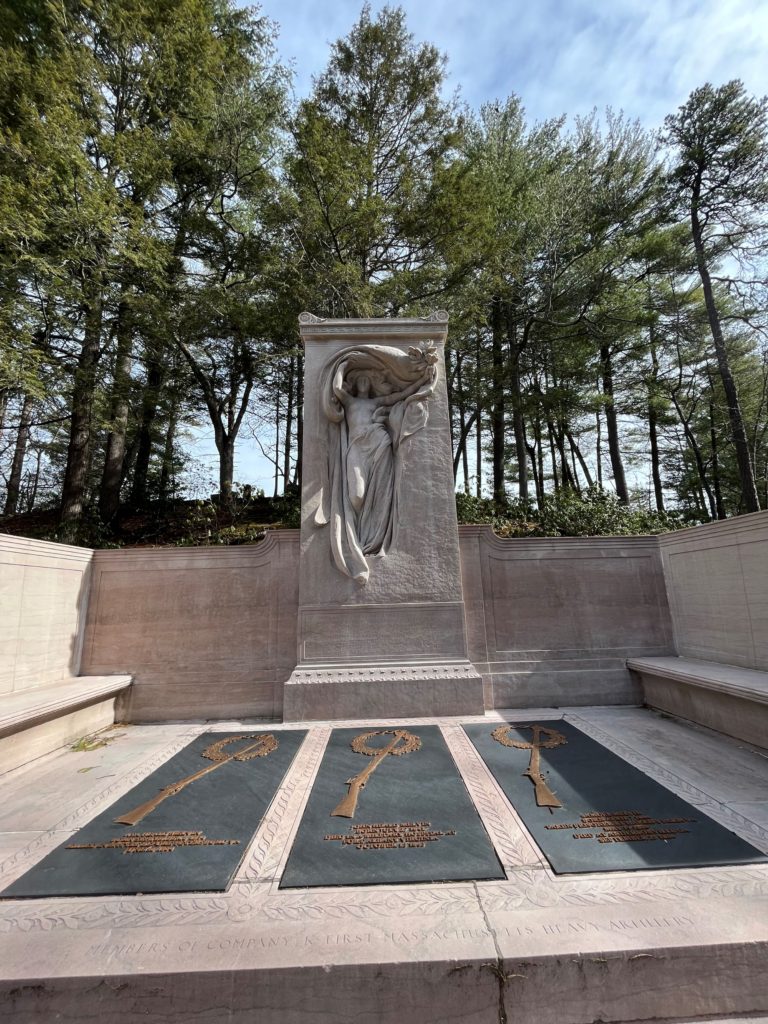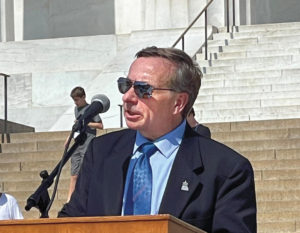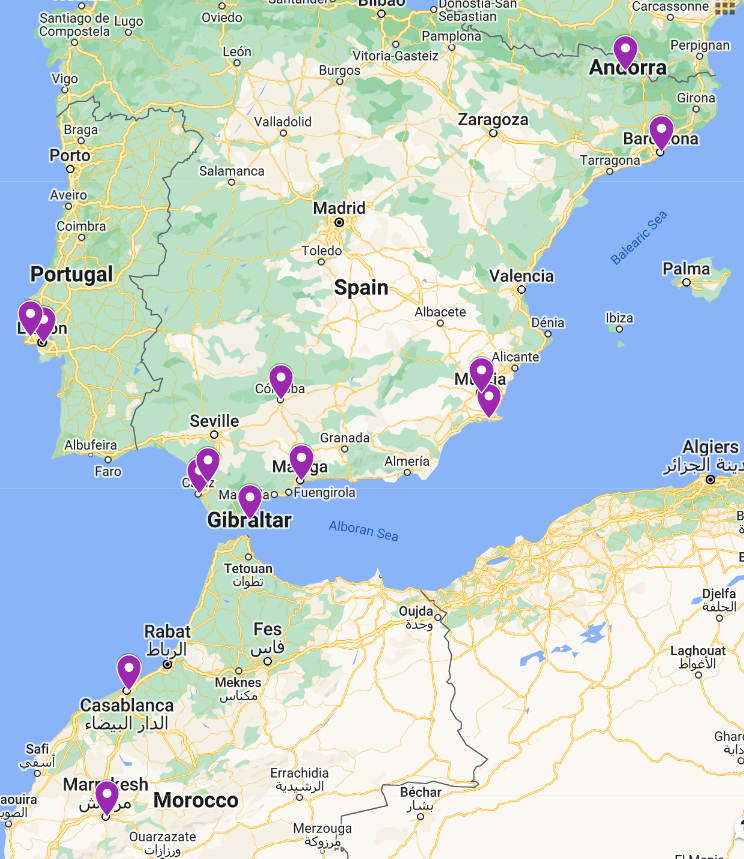The original Memorial Day, then called Decoration Day because gravestones of fallen soldiers would be decorated with American flags, was May 30, 1868. It remained the 30th until 1970, the first year it was officially designated as the last Monday in May. May 30th was also the date on which the Lincoln Memorial was dedicated in 1922. Robert Lincoln, Abraham and Mary’s oldest son and the only one of the four boys to reach maturity, was present at the dedication. I had the privilege of emceeing the Lincoln Memorial Centennial program in 2022. If you missed it, you can watch the entire program on C-SPAN.
Memorial Day was celebrated yesterday, May 29, 2023. President Biden Vice President Harris laid the traditional wreath at the Tomb of the Unknown Soldier in Arlington National Cemetery. Arlington was created in the Civil War on the property belonging at the time by Robert E. Lee, whose defection to the confederacy led the United States government to take possession of the land and dedicate it as a resting place for soldiers. It also holds the graves of presidents (e.g., John F. Kennedy) and Robert Lincoln, who was buried in Arlington at the request of his wife rather than in the Lincoln Tomb in Springfield, Illinois with his parents and brothers.
The Memorial Day observances reminded me how many cemeteries I’ve visited in recent years. I had grown up across the street from the Old Burying Ground, one of the oldest cemeteries in the country, having been established in 1634. I’ve visited many cemeteries over the years during my various road trips to examine Lincoln sites. In addition to the Lincoln Tomb, I’ve seen the gravestones of Lincoln’s sister Sarah, his parents, and many other relatives and others associated at one time or another with Lincoln. And of course, I usually end up in Gettysburg, Pennsylvania each year where Lincoln spoke at the dedication of the cemetery with his unforgettable Gettysburg Address.
On my most recent road trip that took me to New England, I made sure to stop at the Sleepy Hollow Cemetery in Concord, Massachusetts. Concord had been a hotbed of transcendentalism in the 1800s, which attracted authors such as poet Ralph Waldo Emerson, writer Louisa May Alcott (Little Women), Nathaniel Hawthorne (Scarlet Letter, House of Seven Gables), and Henry David Thoreau (Walden, Civil Disobedience). Gravestones for these authors are conveniently placed near each other in an area called “Authors’ Ridge.” One of the more famous memorials at Sleepy Hollow is from the team that brought us the Lincoln Memorial. Daniel Chester French was commissioned by Boston businessman James Melvin to create a funerary monument to honor his three brothers who died in the Civil War. Asa, John, and Samuel Melvin had all served in Company K of the First Massachusetts Heavy Artillery. French designed the central figure of Mourning Victory emerging from a block of marble and overlooking bronze memorial tablets for each of the three brothers. The exedra that surrounds the monument was designed by Henry Bacon, just as Bacon designed the Lincoln Memorial that surrounds French’s massive seated Lincoln sculpture that dominates the Memorial’s interior.

French’s original design was to have the image of “Victory” with her right arm outstretched and the left raised. After seeing the location of the monument in Sleepy Hollow, French decided to switch the positioning, putting the left arm outstretched so that people coming up the path would not have the face of “Victory” covered by her upraised elbow. But when a copy of the monument was created for the Metropolitan Museum of Art a few years later, French had it carved according to the original design, with the right arm outstretched.
Other stops on the New England road trip took me to Hildreth Cemetery in Lowell, Massachusetts to see the massive gravestone of General Benjamin Franklin Butler, a key figure in the Civil War and later a Massachusetts congressman and governor. I also stopped at the Grove Street Cemetery not far from the campus of Yale University in New Haven, Connecticut, to see the graves of Eli Whitney and his family. Whitney played a major role in my book Lincoln: The Fire of Genius because in 1794 he patented the cotton gin, which made it easier to remove the seeds from cotton bolls, thus making cotton more profitable and inadvertently leading to the expansion of slavery.
All this talk about my time visiting cemeteries reminds me that last September I had the honor of being one of the dedicatory speakers for a new monument in Congressional Cemetery in Washington, DC that honors famed Civil War photographer Mathew Brady (whose photograph of Lincoln on the day of his Cooper Union speech may have made him president), Abraham Lincoln himself, and Frederick Douglass. I also had the privilege each of the last several years of laying a wreath at the feet of Daniel Chester French’s seated Lincoln in Henry Bacon’s Lincoln Memorial as part of the annual Lincoln’s birthday program.
I do feel as if I live a privileged life, even if it seems I spend an inordinate time in cemeteries.
[Photo by David J. Kent, 2023]

Lincoln: The Fire of Genius: How Abraham Lincoln’s Commitment to Science and Technology Helped Modernize America is available at booksellers nationwide.
Limited signed copies are available via this website. The book also listed on Goodreads, the database where I keep track of my reading. Click on the “Want to Read” button to put it on your reading list. Please leave a review on Goodreads and Amazon if you like the book.
You also follow my author page on Facebook.
David J. Kent is President of the Lincoln Group of DC and the author of Lincoln: The Fire of Genius: How Abraham Lincoln’s Commitment to Science and Technology Helped Modernize America and Lincoln: The Man Who Saved America.
His previous books include Tesla: The Wizard of Electricity and Edison: The Inventor of the Modern World and two specialty e-books: Nikola Tesla: Renewable Energy Ahead of Its Time and Abraham Lincoln and Nikola Tesla: Connected by Fate.



 One year ago today I was the master of ceremonies for the centennial anniversary of the dedication of the Lincoln Memorial. What an experience it was.
One year ago today I was the master of ceremonies for the centennial anniversary of the dedication of the Lincoln Memorial. What an experience it was.




















